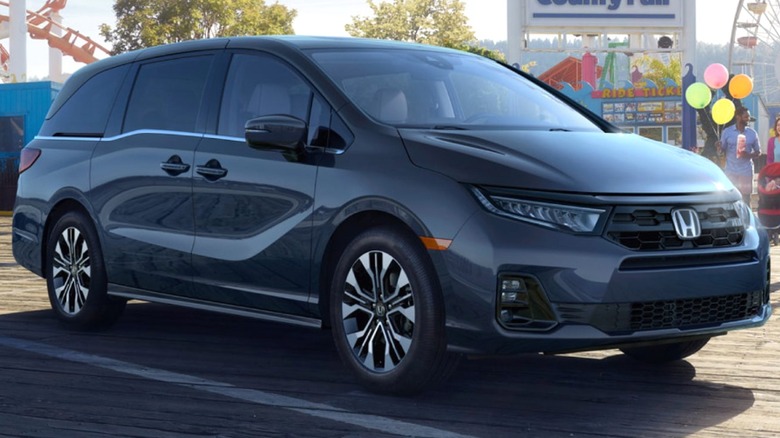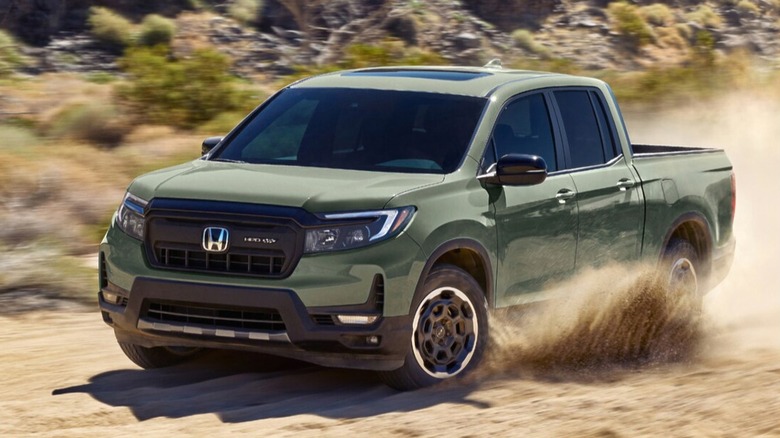5 Honda Models With The Highest Maintenance Costs
Honda is a name most people associate with affordability, low repair bills, and cars that last with regular maintenance. That reputation is well-earned, but it doesn't apply to every model. Some of Honda's most popular models cost far more to maintain than their badges suggest, especially once you move beyond the warranty years.
As technology evolved, so did the costs of keeping these vehicles road-ready. Bigger engines, heavier drivetrains, and advanced electronics have crept into the lineup, and while they've made Hondas more efficient and capable, they've also made maintenance more demanding. What used to be a weekend DIY or an affordable repair bill now involves complex systems and components that simply cost more to replace and service.
From SUVs like the Pilot to pickups like the Ridgeline, even the brand's most trusted vehicles can surprise owners with repair bills that climb faster than expected. We examined how overall costs climb once service, parts, and the odds of a major repair are factored in to distinguish five Hondas that demand more from your wallet.
Honda Accord
There's a quiet irony about the Honda Accord. It's one of those cars that seems to top the Honda sales charts for its reliability and comfort, yet ownership costs can be surprising over time. Keeping it in good shape isn't unreasonable, but it's not necessarily cheap.
Over a 10-year span, CarEdge estimates around $5,836 for its upkeep, which is a bit better than its rivals. In the early years, the Accord doesn't really ask for much. CarEdge estimated about $1,900 in maintenance over the first five years, primarily for oil changes and brake checks, but costs rise gradually with mileage. A new owner might pay $250 in the first year, but by year ten, that number climbs to $861. This is because later years call for bigger tasks like spark plug replacements, coolant changes, and brake fluid flushes. According to RepairPal, the Accord costs $400 per year to maintain on average, though some repairs can be more expensive.
Honda Odyssey
Owning a Honda Odyssey feels like signing up for peace and quiet comfort on wheels, if for no other reason than it's one of the most successful models Honda has ever built. It's the kind of van that can haul a crew of passengers, survive school runs, and feel comfortable on a long highway trip. But that peace of mind doesn't come free. Kelley Blue Book estimates maintenance at $3,885, averaging about $750 per year, while repairs can tack on another $683 to $1,882 during that same period. RepairPal predicts you will pay around $547 per year in repairs, a manageable number, but costs will creep with age.
The first year of service barely crosses the $80 mark, but things don't stay that light forever. By the fourth or fifth year, Edmunds estimates outlays north of $1,000 and climbing. Oil changes, brake checks, and fluid swaps dominate the early years. Later on, it's the pricier work — like water pump replacements, refrigerant line fixes, or oil pan swaps — that remind you this van isn't all serenity and school runs. Stick with the Odyssey for a decade, and the total spent on upkeep is around $8,000. Still, for something with this much tech and space, the price for maintenance and repairs feels like a fair trade.
Honda Pilot
If you've ever owned a Honda Pilot, you probably already know it's built to last, but there are things to know before buying the Pilot that go beyond its solid reputation. Keeping this SUV running smoothly takes a little more effort and a bit more money than some of its Honda siblings. Across the first decade, you're likely to spend somewhere around $8000, with the first five years taking up a third of that on upkeep and repairs. Those early years start off light in CarEdge's view — around $347 in the first year and rising by over $1,000 during the course of a decade of ownership when the odometer starts to show high mileage.
Kelly Blue Book's out-of-pocket maintenance estimate is just shy of $4,000, while repairs amount to an estimated $1,726. After years four and five, it's not uncommon for annual upkeep to exceed $1,800, especially on higher trims. By the ten-year mark, about one in five owners experiences a big-ticket repair. Even RepairPal pegs its price for fixes for a year at about $542, and it gives it a reliability rating of 3.5 out of five stars.
Honda CR-V
Since its debut in the late '90s, the Honda CR-V has been a favorite among families thanks to its easy balance of comfort and efficiency. After six major redesigns, it's still known for reliability, even though long-time owners have a lot to say about its behavior once miles start piling up. Stretch its ownership timeline past the first few oil changes, and you will see a different side to its bills. Yes, it used to be affordable, but now it edges into the territory of Hondas with steep, long-term upkeep and repair bills.
Over 10 years, CarEdge estimates the total at about $7,665, with $2,440 of that setting owners back in the first five years. Most of that comes from routine jobs — brake checks, air filters, spark plugs, and drive-belt swaps — that may never result in the popular issues drivers notice, but will always spike the bill. The first year averages $322 in annual costs, and reaches $1,141 by year 10 of ownership. Across the first five years, Edmunds puts maintenance at $6,183 and repairs at $730. Even with a solid 4.5 reliability rating from RepairPal, the CR-V still isn't light on the wallet. Its annual upkeep averages $407, which is less than many larger SUVs, but still significant for a compact crossover. The odds of a major repair are near 9% within five years and rise to about 22% after a decade — better than the segment average but hardly trivial.
Honda Ridgeline
Honda's lone truck, launched in 2005, was for drivers who wanted a pickup that behaved more like a car. Four redesigns later, and it appeals to the same buyers who have valued its utility, refinements, and reliability for more than a decade. What it doesn't escape is the creeping cost of long-term ownership. Over its first few years, the CarEdge estimates about $372 in its first year. By the halfway point in ownership, costs reach about $2,800, bringing the eventual 10-year total to roughly $8,844. Although RepairPal pegs its yearly repair cost at about $502 which is just a touch cheaper than the average midsize truck, but if you consider rough use for years of trucking, loyal Honda owners have enough reasons to wince.
Kelley Blue Book places the Ridgeline's five-year overall ownership cost near $40,290, a figure that includes everything from maintenance and repairs to fuel and depreciation. Of that amount, about $4,371 goes to scheduled care, while another $1,797 stems from repairs. The good news is that owners don't visit the shop often — about 0.3 times per year — but when they do, the work won't be cheap. Roughly one in ten repairs turns out major, a reminder that even reliable trucks can quietly drain a budget. New water pump costs approach $1,100, starter replacements can reach $1,300, and the dreaded manifold swap passes the $2,000 mark.
Methodology
To identify which Honda models are the most expensive to maintain, this analysis drew from long-term ownership and repair data published by RepairPal, CarEdge, Edmunds, and Kelley Blue Book. These platforms collect real-world information from owners and certified repair shops, providing a clearer picture of what it actually costs to keep a Honda running once the warranty period has passed. The research looked at ten-year maintenance projections, five-year ownership estimates, and how often each model tends to visit the shop. It also considered the likelihood of a major repair, along with the average price of parts and labor. Comparing these details across several model years helped reveal patterns that one-off repair records might miss.
Each model's figures were then measured against its segment — compact SUV, midsize sedan, pickup, or otherwise — to see how it performs within its own category. Models that consistently showed higher upkeep costs, frequent service needs, or expensive component failures were considered strong candidates for inclusion. However, this approach doesn't label any Honda as unreliable. Most remain among the longest-lasting vehicles on the road. The aim was to focus purely on cost and how much it truly takes to keep certain Hondas in top form over time, even when they perform exactly as promised.






